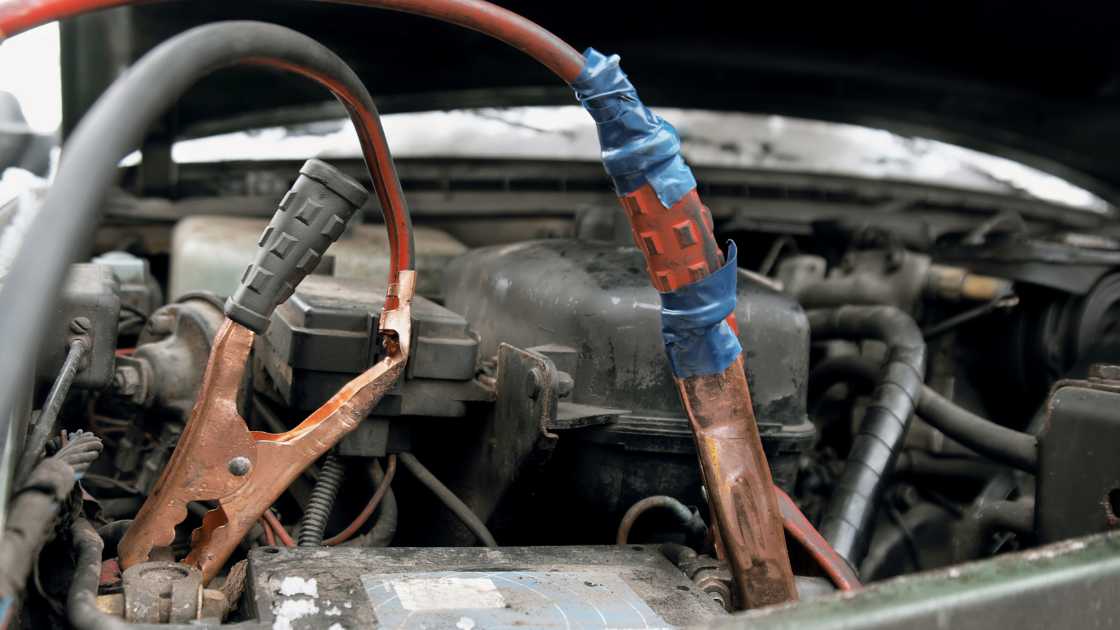
How to Put Jump Leads on a Car: A Step-by-Step Guide
Having a dead car battery can be a frustrating experience, but with the right knowledge and tools, you can quickly get your vehicle up and running again. Jump-starting a car using jump leads (also known as jumper cables) is a simple and effective method. In this article, we will guide you through the process of putting jump leads on a car, ensuring a successful jump start and getting you back on the road in no time.
There are 6 process to putting jump leads on a car
Safety First:
Before attempting to jump-start a car, it’s essential to prioritize safety. Take the following precautions:
Position the Vehicles:
Park the vehicles close to each other, but ensure they do not touch. Turn off both engines and engage the parking brakes.
Identify the Battery Terminals:
Locate the battery in both vehicles. The battery usually has two terminals, marked as positive (+) and negative (-). Identify them correctly.
Assessing the Condition of the Battery
Examine the battery carefully to determine if it is suitable for jump-starting. Look for signs of damage, leakage, or excessive corrosion. If you notice any of these issues, it’s best to call a professional for assistance.
Acquiring Jump Leads
To perform a successful jump start, you will need a set of jump leads. Ensure they are in good condition and of sufficient length to reach both vehicles‘ batteries. Jump leads are readily available at automotive supply stores or online.
Connecting the Jump Leads
Follow these steps to connect the jump leads correctly:
Connect Positive to Positive:
Attach one end of the red jump lead to the positive (+) terminal of the dead battery. Then, connect the other end of the red lead to the positive (+) terminal of the working battery.
Connect Negative to Negative:
Take the black jump lead and attach one end to the negative (-) terminal of the working battery. Next, connect the other end to a clean, unpainted metal surface on the engine block of the dead vehicle. This provides a suitable ground connection.
Starting the Vehicles
Now that the jump leads are connected, follow these steps to start the vehicles:
Start the Engine of the Working Vehicle:
Turn on the engine of the working vehicle and let it run for a few minutes. This will help charge the dead battery.
Start the Engine of the Dead Vehicle:
Attempt to start the engine of the dead vehicle. If it doesn’t start immediately, give it a little more time to charge the battery.
Removing the Jump Leads:
Once the dead vehicle starts, carefully remove the jump leads in reverse order, starting with the black lead from the previously dead car’s engine block.
Letting the Engine Run and Charging the Battery
Allow the engine of the previously dead vehicle to run for at least 15 minutes to recharge the battery. Avoid turning off the engine prematurely, as it may result in needing another jump start.
FAQs
Can I use any type of jump leads for jump-starting a car?
It is important to use appropriate jump leads when jump-starting a car. Look for jump leads that are designed specifically for automotive use and have sufficient gauge (thickness) to handle the current required for jump-starting. Ideally, the jump leads should have insulated clamps and be long enough to comfortably reach between the two vehicles. Using the correct type of jump leads ensures a safe and effective jump-start process.
What precautions should I take when connecting the jump leads?
When connecting the jump leads, follow these precautions to ensure safety:
Avoid touching the clamps together or allowing them to touch any metal surfaces, as this can cause sparking.
Ensure that the vehicles are in park or neutral with the parking brakes engaged before starting the jump-start process.
Always connect the positive (+) clamp to the positive terminal and the negative (-) clamp to a clean, unpainted metal surface on the engine block of the dead vehicle.
Do not connect the negative clamp to the negative terminal of the dead battery, as it can create a spark and increase the risk of explosion.
How long should I let the engine run after jump-starting a car?
After successfully jump-starting a car, it is important to allow the engine to run for a sufficient amount of time to recharge the battery. Ideally, let the engine run for at least 15 minutes or longer. This allows the alternator to replenish the charge in the battery. Avoid turning off the engine prematurely, as it may result in the battery not having enough charge to start the car again. Additionally, if you suspect that the battery is old or weak, it is advisable to have it checked or replaced to prevent future issues.
Conclusion
Knowing how to put jump leads on a car is an invaluable skill that can save you time and money. Remember to prioritize safety, follow the step-by-step instructions, and exercise caution throughout the process. With proper execution, jump-starting a car can be a straightforward procedure that gets you back on the road quickly.





